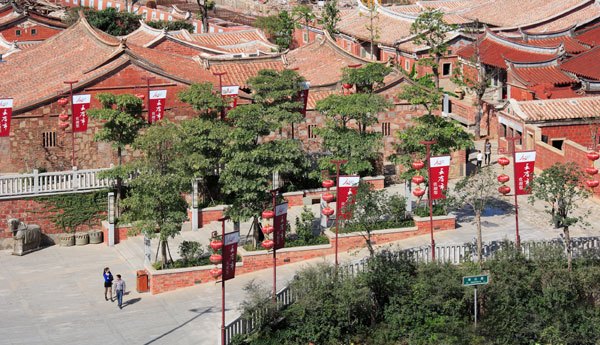

The Wudianshi neighborhood in Quanzhou includes buildings from the Song and Ming dynasties. Shi Qingliang / For China Daily
One important group of foreigners who came to Quanzhou via the Maritime Silk Road during the Tang Dynasty (AD 618-907) were Muslim merchants. A testimony of their clout is the majestic Qingjing Mosque, also known as the Ashab Mosque. It was built to resemble a mosque from Damascus, Syria, in 1009, and it is one of the oldest Arabic-style mosques in China.
The 20-meter-high arched gate is made of green granite. Its domes are carved with lotus plants and Arabic scriptures. When Islamic preachers followed their trade contacts to Quanzhou, the Ashab Mosque's worshipping hall became the center of Islamic prayer in the region.
Although the hall's large dome collapsed in an earthquake, the open-air, grassy field dotted with gigantic pillars evokes an awe-inspiring sense of solemnity.
For a closer glimpse into the city's historical and cultural past, include Wudianshi neighborhood, or "Five Shops District", in your itinerary. A 30-minute car ride from the city's downtown area, the district includes more than 100 traditional buildings from the Song and Ming (1368-1644) dynasties. The buildings were renovated and relocated into the area, part of a project launched in 2012 to resurrect and protect the city's cultural heritage.
The neighborhood gets its name from a Tang Dynasty legend that boasts of the first-class dishes and impeccable service of five restaurants owned by a family surnamed Cai.
Changting Wetland Park in Fujian
2014-08-13Copyright ©1999-2018
Chinanews.com. All rights reserved.
Reproduction in whole or in part without permission is prohibited.